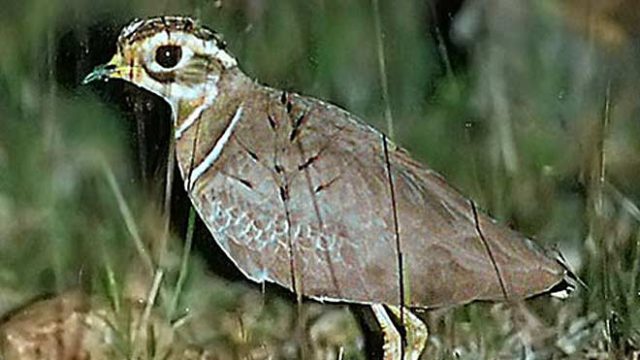The Jerdon’s Courser, one of the world’s rarest birds, is no stranger to ecological isolation. Highly elusive and nocturnal, so far it’s only been found in the dry scrub forests of Andhra Pradesh — along a single site of the Sri Lankamaleswara Wildlife Sanctuary. Now this bird’s dedicated sanctuary has been slapped with plans from the irrigation department to construct the Telugu-Ganga canal. After initial negotiations with the forest department and state government, the canal was shifted. But as work resumed recently, close to the sanctuary’s eastern side, 22 cubic hectares of this birdland will be destroyed.
With the Jerdon’s Courser population estimated at about 30 birds, what’s also at stake here is unknown and unexplored biogeography that connects India with Africa. “The Jerdon’s Courser is one of India’s relictual species, whose co-generics are found only in Africa,” says Dr Bharat Bhushan, who rediscovered the Jerdon’s Courser in 1986. This ‘winged enigma’ was first brought to science by Dr Thomas Claverhill Jerdon in 1848. When stationed with the Madras Regiment as Surgeon-Major he recorded the species in “the hilly country above the Eastern Ghats, off Nellore and in Cuddapah”. This was followed by Howard Campbell’s “presumably authentic sighting” in 1900. Since 1986, Dr Bhushan, professor, environmental planning at Pune’s Centre for Environment and Development, has been trying to study the biology of this double-banded bird via Africa where the three-banded courser nests among stones and half-buries its eggs in dung. But almost 20 years after “the world changed” for Dr Bhushan, when he saw a “quiet looking bird lift its head from a trapper’s hand”, which he compared with a plate in Salim Ali’s book, no one has been able to find a nest of the courser. As axes fall on the thorny trees around the sanctuary, perhaps we’ll never see the secret strut of this kalivikodi, the bird that prefers to walk rather than fly. And, as this lost and found story is forced to a conclusion, we’d do well to recall a universal truth — that extinction is forever. To prevent this, the irrigation department needs only to shift the Telegu-Ganga canal, so these forests will still echo with the sharp peep of this species.




